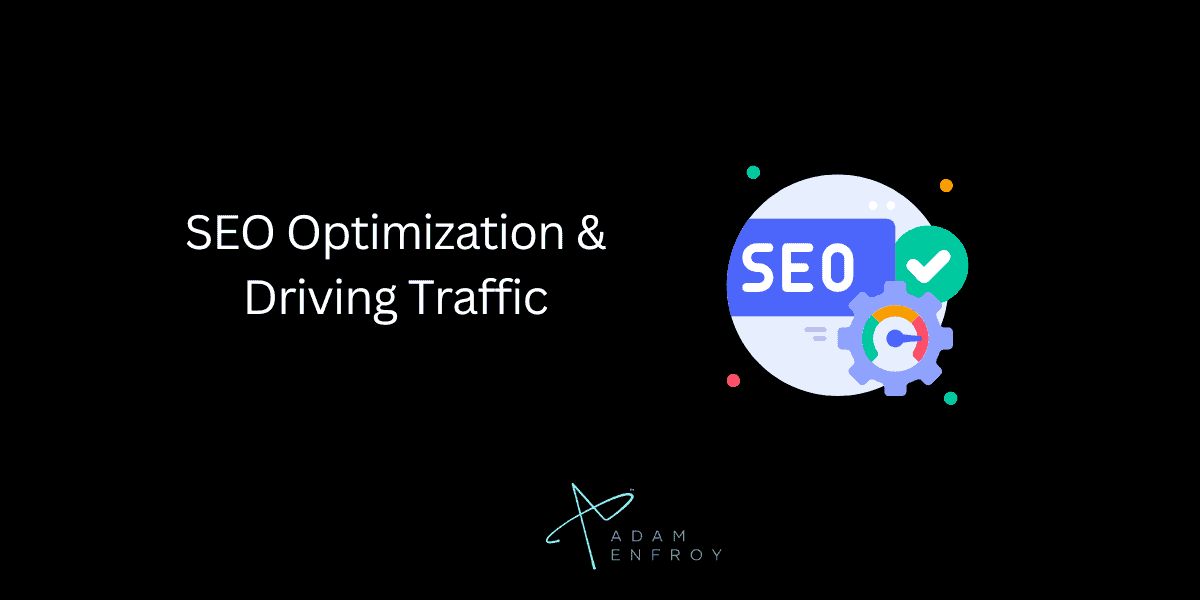Blogging About Technology: The In-Demand Trend of Today

Not many can negate that our world is on a technological hyperdrive, with many feeling left behind.
Now, imagine yourself swooping in as a digital superhero.
A superhero that helps people navigate this rapidly evolving landscape…
…delivering up-to-date tech knowledge while simultaneously cashing in through their blog.
Sounds like a win-win, doesn’t it?
In this blog post, I will share all you need to know about tech blogging, helping you take your industry passion and turn it into a full-fledged money-making machine.
- Critical Steps To Starting A Technology Blog
- Why Your Own Tech Blog Can Be A Game Changer
- Successful Strategies For Tech Blogs
- Establishing Your Authority In The Tech Industry
- Choosing The Perfect Niche For Your Tech Blog
- Finding The Right Tech Blog Domain Name
- Building A Strong Online Presence
- Design And User Experience
- Engaging Your Audience
- SEO Optimization & Driving Traffic
- Final Tips For A Great Tech Blog
- Wrap Up.
Critical Steps To Starting A Technology Blog

Here are the crucial steps for launching a successful blog about technology.
Define Your Niche And Target Audience
The first step to starting your tech blog is identifying your niche and target audience.
You must know what topics you’ll cover and who you’re writing for.
Are you interested in software development, artificial intelligence, or consumer electronics?
Are you targeting blogging beginners or experts in your field?
By answering these questions, you can create a focused and engaging blog that resonates with your readers.
Create A Content Plan
After identifying a niche and target audience, it’s time to create a content plan.
In your content plan, include the following:
- The types of posts you’ll write.
- The frequency of your posting.
- Your content promotion strategy.
Answer these questions:
- Will you write reviews, tutorials, or news updates?
- How often will you post?
- And how will you promote your content on social media, email, or other channels?
A clear content plan lets you stay on track and deliver consistent value to your readers.
Secure Your Domain Name
Your domain name is the foundation of your blog.
It’s the address your audience types into their browser to find you online.
So, choosing a domain name that’s unique, memorable, and reflects your blog’s content is crucial.
But with so many domain names already taken, finding the perfect one can be a challenge.
Here are some tips to help you secure the domain name of your dreams:
- Use a domain name generator tool to brainstorm new ideas
- Try adding a relevant prefix or suffix
- Use a different domain extension like .tech or .io
- Consider using your name as part of the domain
- Research the availability of expired or expiring domain names
Find A Web Host
Once you’ve secured your domain name, the next step is to find a reliable web host to store your blog’s files and make them accessible to your audience.
Your web host is the foundation of your blog.
If it’s fast, reliable, and secure, it’ll positively impact your blog’s success.
Here are some things to consider when choosing a web host:
- Uptime guarantee
- Speed and performance
- Customer support
- Security features
- Pricing and plans
Use WordPress as Your CMS
WordPress is the most popular content management system (CMS) in the world and for good reason.
It’s user-friendly, secure, and easy to install.
Plus, it offers a plethora of themes and plugins tailored to the tech blog niche.
To install WordPress, you’ll need to choose a web host that supports it, which is something to keep in mind when selecting your hosting provider.
Once you install WordPress, you can customize your website with themes, plugins, and widgets.
Choose The Right Theme and Plugins
Choosing a suitable theme is critical to your blog’s success.
You want a visually appealing theme, easy to navigate, and optimized for speed and performance.
Plenty of free and premium themes are available, tailored for tech blogs.
In addition to themes, plenty of plugins can help you improve your blog’s security, speed, and functionality.
Some popular plugins for tech blogs include Yoast SEO, WPForms, and Jetpack.
Brand Your Blog
You need to brand your blog to stand out in a crowded field.
Choose a logo, color scheme, and design that represent your brand and resonate with your target audience.
You should also develop a consistent voice, tone, and style that reflects your personality and expertise.
By creating a solid brand, you’ll be able to build trust and loyalty with your readers.
Network And Collaborate
Finally, you must network and collaborate with other bloggers, influencers, and business leaders to grow your blog.
Connect with them on social media, attend meetups and conferences, and offer guest posts or collaborations.
You can expand your reach and influence in the tech blogging community by building relationships and sharing your expertise.
Why Your Own Tech Blog Can Be A Game Changer
Let’s now explore why starting your tech blog can be a game changer.
Unleash Your Creativity
Starting a tech blog allows you to unleash your creativity by sharing your knowledge and insights about the latest trends and innovations in the tech world.
Whether in software development, hardware engineering, gaming, or other tech fields, blogging allows you to express your unique ideas and perspectives.
You can experiment with different writing styles, formats, visuals, and multimedia to make your content stand out.
Plus, you can engage with other passionate tech enthusiasts who can inspire you and offer valuable feedback on your work.
Enhance Your Writing Skills
Blogging is also an excellent way to enhance your writing skills and build your brand as a tech expert.
Regular blogging lets you practice writing, researching, and communicating effectively with your audience.
It can help you develop a consistent voice, tone, and style that resonates with your readers.
Additionally, by sharing your knowledge, insights, and opinions, you can establish yourself as a credible and authoritative source of information in the tech industry.
It opens up various opportunities for collaborations, partnerships, and even job offers in the future.
Evaluate And Review The Latest Tech Products
Another great reason to start a tech blog is to evaluate and review the latest tech products.
As a blogger, you can provide your readers with honest, unbiased, and thorough reviews of the latest gadgets, software, and other tech products.
You can share your experiences, opinions, and recommendations to help readers make informed buying decisions.
Furthermore, by collaborating with tech companies, you can get early access to new products and services, giving you a competitive edge in the blogging industry.
Successful Strategies For Tech Blogs
When it comes to tech blogs, it’s essential to strike a balance between providing valuable information and not overwhelming readers with lengthy, technical jargon.
According to Wix research, the sweet spot for optimal tech blog length is between 1,500 and 2,500 words, with a sweet spot at 2,450 words.
Such a length is long enough to provide in-depth analysis and detail on a topic but short enough to keep readers engaged and interested.
Writing a tech blog is a full-time job that requires time, effort, and investment.
Creating informative and well-written content can be challenging, and committing to a consistent schedule is essential.
Writing 2 to 4 blogs per week is ideal for expanding your blog’s audience.
However, depending on the field’s competitiveness, you should consider increasing your output to 4 to 6 weekly posts.
As a technical writer, your job is to simplify complex concepts for all readers.
Make sure to tailor your writing to your audience’s level of understanding.
Jargon-heavy language and complex explanations can quickly lead to disinterest and frustration among readers.
Keep it simple, focused, and to the point.
Discovering compelling blog topics is a crucial part of blogging.
Discovering new topics is the key to the success of your site.
Understanding past articles, reviewing frequently asked client questions, and keeping up with technology industry news and advancements are all excellent ways to determine compelling blog topics.
Conducting surveys, collaborating with other writers, and analyzing popular search engine keywords related to your blog’s niche can also provide excellent insights into topic ideas that your audience is craving.
While blogs remain popular, reader habits are shifting.
The average visitor spends around 37 seconds reading a blog article.
Therefore, it’s essential to grab their attention immediately.
Start by crafting intriguing and attention-grabbing headlines.
Use images, videos, and infographics to supplement your information and break up the text visually.
Establishing Your Authority In The Tech Industry

The main problem many tech blog startup owners find with blogging is establishing their authority in the tech industry.
It is essential to deeply understand your subject matter, as readers will quickly recognize any lack of knowledge.
Here’s how you can do just that.
Use Google Trends To Determine Your Niche’s Future-Proof Potential
Ensuring that your chosen niche has staying power with the changing tech industry is essential.
Google Trends is a powerful tool that can help you analyze your niche’s search volume and interest.
Look at the trend line and explore related topics to determine if your niche has the potential to either grow, decline, or maintain its popularity.
Consider how emerging technologies like AI and blockchain may impact your niche in the future.
Conduct Keyword Research To Find Low-Competition Topics
Next, it’s time to conduct keyword research to find 20-25 high-potential topics to cover.
Use tools like Google’s Keyword Planner and Ahrefs to find low-competition keywords with high search volume related to your niche.
Ensure there is low competition for those keywords in terms of SEO, and aim to incorporate them when writing your blog posts.
Include them in your blog post titles, meta descriptions, and content.
It makes it easier for Google and other search engines to understand and rank your content.
Regularly Update Content On Technology Trends
To maintain authority within your niche, update your content regularly and cover the latest trends and news.
Use tools like Feedly and Google Alerts to stay up-to-date on what’s happening in your niche.
Aim to publish high-quality, informative blog posts that offer value to your readers and showcase your expertise.
Target High CPC Keywords To Increase Your AdSense Revenue
As you build authority and attract regular traffic, consider targeting high CPC keywords to increase your AdSense revenue.
These more competitive keywords can earn you more money per click.
However, it’s crucial to balance these keywords with high-quality, informative content that offers value to your readers.
Choosing The Perfect Niche For Your Tech Blog

When blogging, it’s not just about the topic but also the approach, audience, and positioning.
Choosing a niche helps you establish yourself as an expert in a particular area and attract an audience with common interests.
A niche can also help you create a unique voice, build trust with your readers, and offer more focused content that resonates with them.
By choosing a niche for your tech blog, you avoid getting lost in an oversaturated market and stand a better chance of gaining a foothold in a competitive space.
One effective way to choose a niche for your tech blog is to follow your passion.
Blogging is a long-term commitment, and writing about a topic you enjoy and have expertise in makes it more sustainable.
Consider your hobbies, interests, and the subjects that excite you within the technology field.
If you’re an expert in a particular area, leverage that knowledge and share it with the world.
When you choose a niche that aligns with your passions, you’ll have the morale to write, and your readers will pick up on that enthusiasm.
Choosing an exciting and accessible niche is vital for attracting and engaging your audience.
Ensure your tech blog niche is interesting and accessible to your target audience.
If your topic is complex, simplify it enough for your readers to understand.
Also, consider the tone of your blog and the type of visuals you use to capture the interest of your readers.
Finally, offer value to your readers and constantly improve your content.
Finding The Right Tech Blog Domain Name

Before creating content, come up with a catchy and memorable domain name.
Your domain name is the foundation of your online presence, and you must get it right.
A good name can help you stand out in a crowded market and attract the right audience.
Here are some of my suggestions.
Go For A .com Domain
When choosing domain extensions, people widely recognize .com.
Your audience is more likely to remember a domain name that ends in .com.
Also, search engines tend to favor .com domains over other extensions, making it easier for you to rank higher in search engine results.
Keep It Broad, Simple, And Short
A broad domain name gives you the flexibility to cover a wider range of topics in the future.
A simple and short name is easy to remember and type.
Avoid using numbers, hyphens, or complicated words that are hard to spell or pronounce.
Use Alliteration And Unique Ideas
Using alliteration (repeating the same sound at the beginning of multiple words) in your domain name can make remembering easier.
Also, consider unique and quirky names that reflect your brand personality and resonate with your target audience.
Don’t Let A Taken Name Hold You Back
Don’t give up if someone else has already registered the domain name you want.
You can use a domain name generator to come up with alternative ideas.
Play with synonyms, abbreviations, or creative variations of your perfect name.
Building A Strong Online Presence

In the technology industry, staying up-to-date on the latest technology news and breaking news is essential to keep readers engaged.
Bloggers can stay informed about tech startups and news stories by following their favorite technology news website (such as Mashable, TechCrunch, The Verge, Gizmodo, and Wired).
They can then use them as inspiration for their technology blogs.
Leveraging social media is another critical strategy for building a solid online presence.
Such leverage allows bloggers to engage with the business technology community and reach a wider audience.
With these comprehensive strategies, technology bloggers can establish themselves as experts in the field and attract more readers to their blogs.
Design And User Experience
When it comes to design and user experience in blogging about technology, you must prioritize some crucial elements.
These include balancing function and aesthetics and following current trends from online technology magazines.
It’s also essential to keep up with the latest technology news and product reviews, particularly gadgets and products from consumer electronics markets.
Some of the best tech blogs, like CNET, VentureBeat, and Engadget, are excellent resources for staying current on the latest tech news and reviews.
With a focus on technology review and the latest tech news, a successful tech blog can offer readers valuable information and perspectives on the constantly evolving world of technology.
Engaging Your Audience
Incorporate interactive elements to engage your audience on a popular tech blog about technology.
By doing this, you can make your blog more than just words.
Incorporating insights into emerging trends and consumer technology can also help keep your audience engaged.
Featuring reviews and news on smartphones and laptops, including Apple and Android tech, is an effective way to pique the interest of your readers.
For an ambitious multimedia effort founded on digital culture and trends, cater to your audience with rich and informative content.
For example, let’s say your target person is a self-identifying geek that does ethical hacks on an operating system.
You can provide them with a detailed case study of the hack and how to do it safely.
If you’re target decision makers specializing in IoT and current digital trends, provide them with a comprehensive breakdown of the new tech landscape and what they need to know.
SEO Optimization & Driving Traffic

SEO optimization is crucial for any technology blog that aims to stay relevant today.
With such keyword-rich content and a well-researched approach, you can ensure that your blog will remain visible to the public.
You can also target high CPC keywords catering to important technology news and analysis.
You can significantly boost a blog’s visibility by speaking about such topics.
From cloud computing to machine learning, there are a lot of ideas to consider.
For example, exploring open-source and automation opportunities can keep your blog up-to-date with the latest tech trends.
By providing such news, tech bloggers can attract a wider audience.
From IT professionals who crave news articles about Silicon Valley to those that follow trusted sources like Recode and ZDNet, you can ensure your blog can reach a broad range of people.
Final Tips For A Great Tech Blog
Before I conclude, here are some final tips for creating an excellent tech blog.
Master The Art Of Consistency And Focus With Content Pillars
Consistency is vital when it comes to blogging.
One way to ensure your content is consistent is by creating content pillars.
Content pillars are categories that your blog topics fall into.
This way, your readers know what to expect from your blog, and you can create a focused content strategy.
For example, if you are running a technology blog, your content pillars could include software, hardware, mobile apps, and cybersecurity.
By sticking to these pillars, you can ensure your blog content is consistent and focused.
Don’t Be Afraid To Explore The Various Possibilities
The technology industry is vast, and there are endless topics to write about.
However, by exploring tech blog pillars, you can focus on specific areas and become an expert in that niche.
It will help you attract and retain readers interested in those particular topics.
Some examples of tech blog pillars include artificial intelligence, virtual reality, blockchain, and digital marketing.
By creating content around these pillars, you can build a loyal following interested in your expertise.
Learn How To Attract And Retain Readers With Compelling Content
It goes without saying that to attract and retain readers, make your content compelling.
But what makes content compelling?
Firstly, your content needs to provide value to your readers through educational content, thought-provoking ideas, or tips and tricks.
Secondly, your content needs to be engaging.
It needs to be easy to read, visually appealing, and shareable.
Tap Into The Power Of Competitor Blogs
One way to improve the quality of your content is by studying your competitors’ blogs.
By analyzing what they do well and where they fall short, you can improve your content and take it to new heights.
Don’t copy your competitors’ content but rather take inspiration from them.
For example, you could analyze your competitors’ content pillars and take inspiration from your own.
You can also analyze their writing style, visual elements, and content strategy.
Doing this can improve your content and attract and retain more readers.
Wrap Up.
Having a tech blog that’s different from the rest is a challenging feat.
However, having a clear plan and knowing where you want to take your blog can set you off in the right direction.
By following the above tips, you can help your tech blog stand out and become a valuable source of information for your readers.
Further reading on AdamEnfroy.com: Personal blogging can be an effective way to create a presence for yourself online.
Blogging can also be a platform to promote your business or organization and display your expertise and brand voice.
Creating a blog business plan before you start is key to long-term success.





